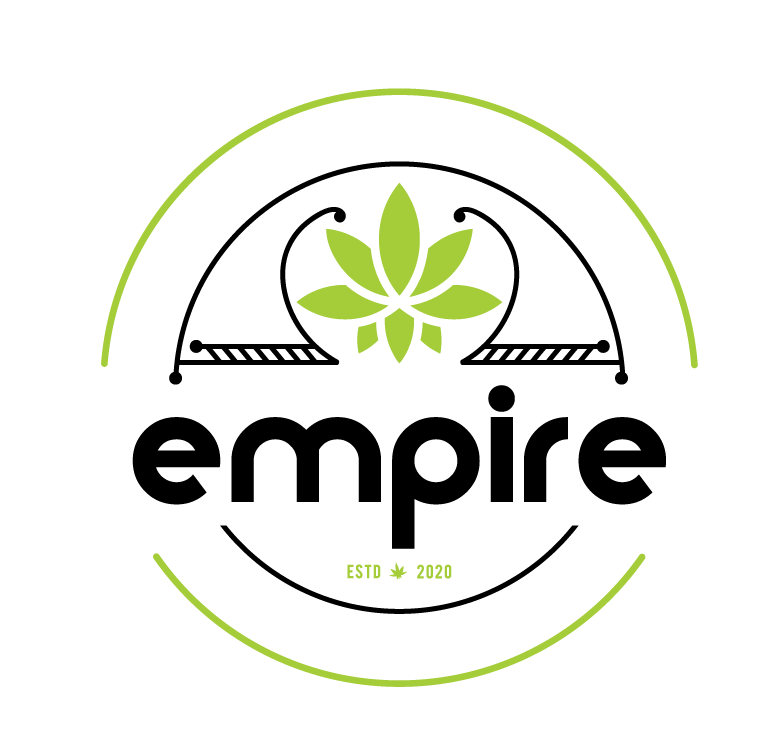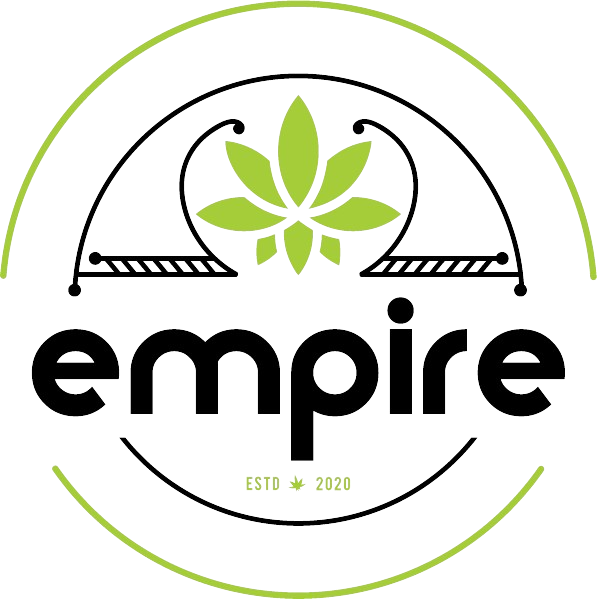The Pros and Cons of Growing Weed With LEC Lights

Some sources claim that LEC grow lights will forever change the way we grow weed indoors. Keep reading to learn the truth about the efficiency and quality of Light Emitting Ceramic grow lights.
Light Emitting Ceramic lights have stirred up conversation among cannabis growers, offering unique benefits over Metal Halide/High-Pressure Sodium and LED fixtures. In this article, we take an honest look at LEC lights, explain how they differ from LEDs, and scrutinize their unique pros and cons to see if they’re really a viable option for cannabis growers.
What Exactly Are LEC Grow Lights?
LEC is an acronym for Light Emitting Ceramic and refers to a type of grow light technology technically known as Ceramic Metal Halide (CMH). In fact, LEC is a trademark of the Sun System grow lights company that’s used to refer to the company’s own version of CMH light technology. However, probably due to the popularity of Sun System grow lights, the trademark LEC has come to be used interchangeably to refer to CMH grow lights in general.
LED and LEC grow lights might seem similar at first glance due to their names. However, there’s really nothing similar about them. Here’s how LEC and LED lights differ:
- While LED lights got off to a rocky start, modern LED fixtures are exceptional. By utilising diodes rather than incandescent bulbs, they offer longevity, energy efficiency, and produce very little heat. LED lights offer growers access to high-quality lighting that can produce spectacular yields, all without the bulk, heat, and complexity of traditional HPS lights. Despite their high upfront costs, LED grow lights are efficient, long-lasting, and typically feature switchable light spectrums tailored for the veg and bloom, and hence are a popular choice among both hobby and professional growers. They also emit the least heat of all grow lights, which can be beneficial for some growers.
- LEC lights promised to revolutionise indoor cannabis cultivation, and they definitely have their list of pros (see What Are The Advantages of LEC Grow Lights?). Using ceramic arc tubes rather than quartz, LEC or CMH lights are kind of a hybrid between Metal Halide and High-Pressure Sodium lights. Most notably, they produce a very natural light, especially when compared to the amber light of HPS, the white light of MH lights, or the red and blue lights of LEDs. Moreover, CMH lights are capable of producing UV rays which, although damaging in excess, are believed to promote more terpene and resin production when used to grow cannabis.
- LEC grow lights have many unique benefits that may make them an interesting choice for indoor cannabis growers. These benefits include:
1. LEC Lights Produce UV-B Light
Arguably the biggest advantage of LEC grow lights is that they produce UV-B light rays. UV, or ultraviolet light is an invisible form of light naturally produced by the sun. While UV-B light can be damaging to humans (that’s why we use sunscreen), it can be beneficial for plants at the right doses. UV-B light is said to aid plants in the process of photosynthesis and promote faster plant growth during the vegetative stage. Moreover, in the flowering phase, UV-B lights are believed to foster the production of more trichomes and particularly terpenes. Some growers hypothesise that trichomes help shield cannabis plants from UV light.
2. LECs Are More Efficient Than HPS Lights (But Still Produce Some Heat)
High-Pressure Sodium lights have long served as the favorite grow light option for many cannabis cultivators. One of the biggest pitfalls of HPS lights, however, is their efficiency. While they can produce great yields, HPS lights are renowned for being expensive to run and inefficient, producing a lot of heat that needs to be dealt with using intake, outtake, and oscillating fans. While LEDs are the polar opposite of HPS lights, offering extreme efficiency, their lack of heat production can also be a problem for growers living in cooler regions who want to keep their tent/room operating during the winter. LECs perfectly walk the fine line between HPS and LED lights; they are far more efficient than HPS lights, yet still produce some heat to help keep your tent/room at the right temp. Note that if you plan to use LEC lights in the summer, however, you will likely need to invest in ventilation and possibly even air conditioning, as you would with HPS lights.
3. LECs Are More Affordable Than LEDs
While LEDs dominate a fair share of the grow light market, they aren’t always the best option for hobby growers due to their high upfront costs. For budget-conscious growers, LECs can offer the perfect solution, as they are typically 2-4 times cheaper than LED lights.
4. LECs Produce “Natural Light”
Another reason many growers like LEC lights is because they produce a more “natural” looking shade of light. While it’s important to protect your skin and eyes when stepping into a tent/room equipped with a LEC fixture, the natural colour light of these lamps is extremely pleasant. Not only will you be able to bask in the beautiful colours and hues of your plants, but the natural spectrum of LEC lights can also make it easier to spot pests, nutrient deficiencies, or pathogen problems that might otherwise go unnoticed under the unnatural light produced by HPS bulbs or LED racks.
5. Many LECs are Plug-And-Play
HPS lights need a ballast and usually feature big fixtures that can be daunting to set up for beginner growers. LEC fixtures are also somewhat large (especially when compared to thin modern LED racks), but many modern LECs come with built-in ballasts and plug-and-play capability, meaning their setup is as simple as hanging them at the desired height and plugging into a wall outlet.
What Are The Disadvantages of LEC Grow Lights?
While LECs promise some unique benefits, they are far from flawless options. Growers who have experimented with LEC lights and compared them to LEDs, HPS, and MH fixtures report the following disadvantages:
1. The Yield Potential Of LEC Lights Is Debatable
Some growers swear that LECs produce great yields. However, some online comparisons show that they don’t quite hold up against LEDs. This comparison by Grow Weed Easy[1], for example, found that a 315W LEC light produced an average of 0.67g per watt, compared to a 260W LED fixture that produced 1.02g per watt. The same comparison also found that the LEC-grown plants were leggier and produced flowers that had slightly less THC but notably more terpenes. Depending on how much you value yield size, the smaller yields of LEC lights might not be worth your while.
2. LECs Are More Expensive Than MH or HPS Lights
While LECs are cheaper than LED lights, they are also far more expensive than HPS or MH lamps, at least in terms of outright costs. While the running costs of LECs might be cheaper than those of HPS/MH lights, this will depend greatly on the conditions of your grow tent/room.
3. LECs Can Burn Your Plants and You!
Because they produce UV-B light, LEC lights need to be used with caution. First and foremost, it’s important to protect your eyes when stepping under LEC lights. Secondly, it’s also important to space LEC fixtures far enough from your canopy to avoid burning your plants. See How To Use LEC Lights In Your Grow Tent below for some general guidelines for properly setting up LEC fixtures.
4. LEC Lights Call For Bulb Changes
Another potential downside to using LEC lights is that, for the best results, you’ll want to use different bulbs during veg and bloom. While it’s not a major inconvenience, changing out light bulbs obviously isn’t as simple as turning a knob/flipping a switch on an LED panel. Plus, LEC lights aren’t exactly cheap, and the cost of buying different bulbs can add up over time (especially if your lights get used a lot).
5. LECs Don’t Last As Long As LEDs
If the longevity of your grow light is important to you, then there’s simply no looking past LED lights. High-quality LED bulbs generally last for up to 50,000 hours. Meanwhile, LEC bulbs typically need replacing after 20,000 hours. Also, LED lights don’t lose luminosity as they approach the end of their shelf life, which is the case for LEC, MH, and HPS lights. This means your plants will still receive the same quality light even if your LED panel has a bunch of running hours under its belt.
How To Use LEC Lights In Your Grow Tent
Because LEC lights are so powerful, it’s important to take some precautions when installing and using them in your grow. Here are some general guidelines for installing and using LEC lights in your grow room/tent:
- Keep LECs a safe distance from your canopy. LEC lamps produce UV rays that can significantly damage your plants. When using 315W LEC lights (the most popular fixture for home growers), make sure to keep the lamp at least 45cm from the top of your canopy. If you’re using the more powerful 630W system, hang the light at least 60cm from the top of your plants.
- Always protect your skin and eyes when stepping into a LEC room/tent. Exposure to LEC lights can cause serious damage to your skin and eyes, so be sure to use protective eyewear and cover up your skin when entering a LEC-powered grow space.
- Remember that LECs give off more heat than LEDs but less heat than HPS lights. Keep that in mind when hanging your lights and planning your grow setup. Depending on how cold it gets where you live, the heat produced by LEC lights might help keep the temperatures in your tent/room optimal.
How Do LECs Compare To Other Cannabis Grow Light Options
Presently, cannabis grow lights fall into 4 categories: CFL (Compact Fluorescent Light), Metal Halide (MH), High-Pressure Sodium (HPS), LEDs, and LECs. Each lighting option has its pros and cons, and choosing one over the other will depend on your budget, your skill level, the purpose of your grow, as well as the type of setup you’re running.
CFL lights offer middle-of-the-road performance and simplicity at a cheap price. They are typically the starting point for many first-time growers because they’re readily available and easy to install. While they can be used to take a plant from seed all the way through to harvest, the poor strength of these lights means they’re not generally recommended for anyone other than complete rookies who want to try their hand at growing a few plants for the first time. Anyone looking for anything more than a mediocre harvest should be looking to MH/HPS, LED, or LEC fixtures. CFLs aren’t an option for commercial cannabis growers.
Metal Halide and High-Pressure Sodium lights have long served as the cornerstone lighting solution for indoor growers. In fact, many experienced growers still choose them over more modern options, as they simply produce spectacular harvests. The downside to MH and HPS lights is their running costs and the fact that they require ballasts to mitigate the amount of electrical current flowing to the lights, making for bulkier fixtures with more complex installations. They are a great option for intermediate home growers, as well as commercial growers able to cope with their extremely high running costs.
LEDs and LECs, finally, are the most modern grow lights on the market. While they got off to a rocky start, modern LED fixtures can produce spectacular harvests, all without the bulk, complex installation, and high running costs of MH or HPS lights. However, these benefits come at the price of much higher upfront costs. LECs, on the other hand, are kind of a halfway point between MH/HPS and LEDs: They’re not as expensive upfront as LEDs yet also not as cheap to run; at the same time, they’re more expensive upfront than MH/HPS lights, yet boast potentially cheaper running costs.
Could LEC Lights Be A Game Changer For Growing Cannabis?
LEC lights promised to revolutionise indoor growing. And while they definitely boast some unique benefits over Metal Halide, High-Pressure Sodium, and LED lights, they’re not without their faults. At current, it seems that LEC won’t outperform MH, HPS, or LED grow lights, though their benefits may appeal to some growers.
External Resources:
- LEC vs LED Grow Lights: Side-by-Side Cannabis Grow Journal | Grow Weed Easy https://www.growweedeasy.com
Disclaimer:
This content is for educational purposes only. The information provided is derived from research gathered from external sources.





